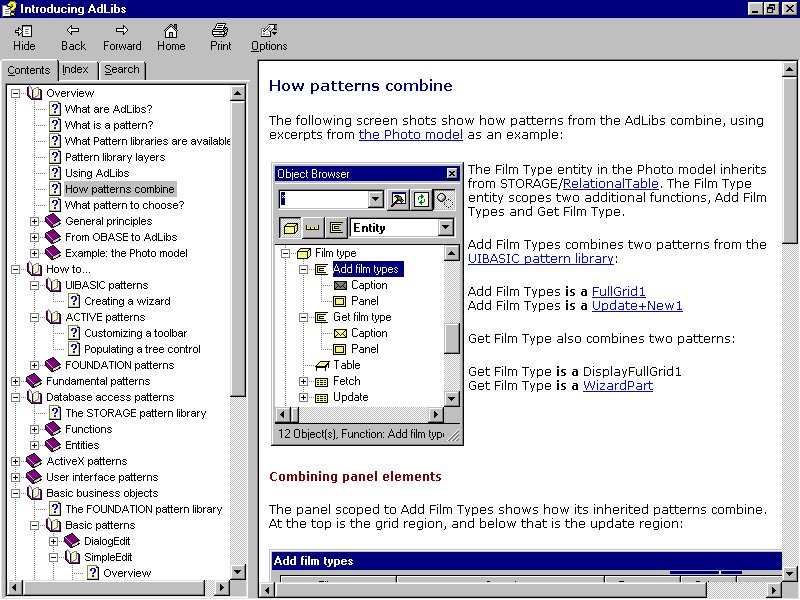This is an exclusive preview of Synon's plans
to significantly
enhance Obsydian's online help system resulting in a shorter learning curve and
reduced dependency on paper based Obsydian documentation
The information contained in this document represents the current view of Synon Corporation on the issues discussed as of the date of publication. Because Synon must respond to changing market conditions, it should not be interpreted as a commitment on the part of Synon, and Synon cannot guarantee the accuracy of any information presented after the publication date. This document is for informational purposes only and was last updated March 19th, 1998.
SYNON MAKES NO WARRANTIES, EXPRESS OR IMPLIED, IN THIS SUMMARY
When Obsydian was first released in 1995, it was shipped with several hardcopy manuals. Over the years the number of manuals have grown. The product consists of:
- Installation Guide
- User’s Guide (780 pages)
- Class Libraries Guide (900 pages)
- 6 Platform Guides & 6 Getting Started manuals
While the documentation was tremendously detailed and useful, a
quicker way of searching the information was required. In 1996 we introduced the manuals
on CD-ROM in Adobe Acrobat format. In addition to this online
documentation search capability, the Obsydian tool itself also currently contains over 24
separate online help files (6Mb).
With the advent of fast searchable online documentation, Synon stopped automatically
shipping Obsydian hardcopy documentation towards the end of 1997. Not only was this a
blessing for the environment, but with the furious pace of releases produced by the
Obsydian development teams, it overcame the problem of hardcopy manuals becoming outdated
2-3 months after they were published.
With the advances in technology Synon is now in a position to further enhance the Obsydian online help system to the point where most of the hardcopy documentation will no longer be necessary. This will be achieved by incorporating HTML help into the Obsydian tool.
What is HTML help?
HTML help is the latest
generation help system. It exploits the Internet Explorer layout engine and will become
the help standard for Windows 98 and Windows NT 5.0.
HTML help adds Contents, Index and Full-text search functionality to standard HTML and
provides a Visual Studio-style Contents browser and flexible, customizable content.
For more information about HTML help, please visit http://www.microsoft.com/msdn/news/htmlhelp.htm
Obsydian 3.5
The new online help system (code named Alchemy) will replace the existing online help and the Obsydian documentation CD-ROM as well as all of the hardcopy manuals (except the installation guide and getting started guide) and will be implemented in Obsydian 3.5 (targeted for Aug 1998).
Obsydian 3.1 (targeted for May 1998) therefore will be the last release where you will receive a documentation CD and also the last release where you will be able to order hardcopy documentation.
The following graphics provides an exclusive sneak peak of the new Obsydian online help system.

The new online help system will provide improved quality by eliminating any inconsistencies that may exist between the hardcopy documentation and the existing online help system. It will also provide a single, searchable source of information for Obsydian developers.
In addition, the conversion to HTML help will allow Synon to focus on developing a new
self-paced learning system.
This new system will allow a pathway to be selected through the information, highlighting
key topics. It will also incorporate animated demos, exercises and tests. More information
about this new self-paced learning system will be made available shortly.
For more information, comments and questions please send an e-mail to Daniel Leigh, Development manager for Obsydian's learning technologies (dgl@synon.com).
|
©1995-98 Synon Corporation. All rights
reserved. |